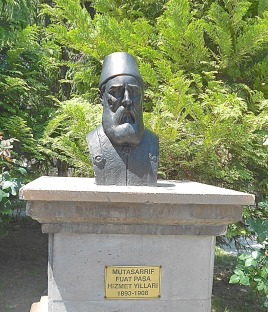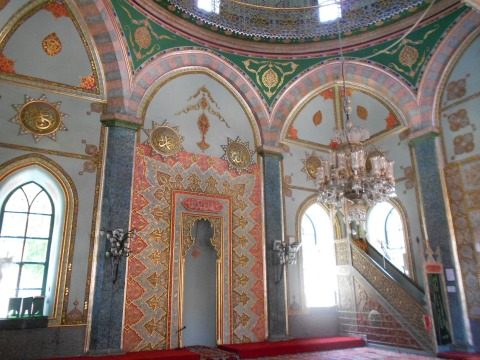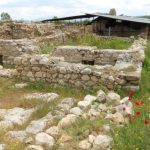I don’t know how many times I must have wandered past the Yeşil Cami in Kütahya without ever thinking to take a look inside, but today something makes me push open the door – – and what a revelation it is.
Inside, as is normal during Ramazan, a Koran class is taking place, or rather in this case is just winding up as the boys close their books and start clearing away their desks to make space for lunch-time prayers. But that’s not what is such a revelation. Instead what is so amazing is to discover a glorious example of very early 20th-century baroque mosque decoration of the sort that would look more at home on the shores of the Bosphorus.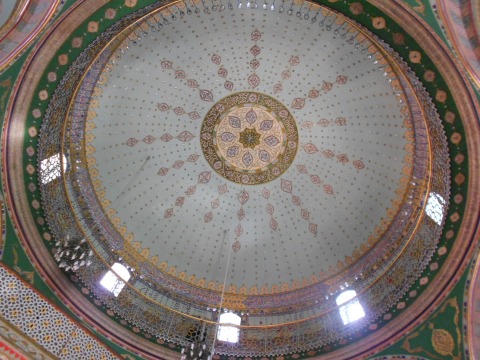
In Turkey the word “green” when applied to a mosque often turns out to mean something closer to a turquoise blue but here the walls are indeed green and a green that comes paired with gold, with every surface densely covered in elaborate decoration. Even the spiral staircase up to the gallery is a work of art, gold-rimmed stars cut out all the way up it as if with a pastry cutter. I’m absolutely enthralled.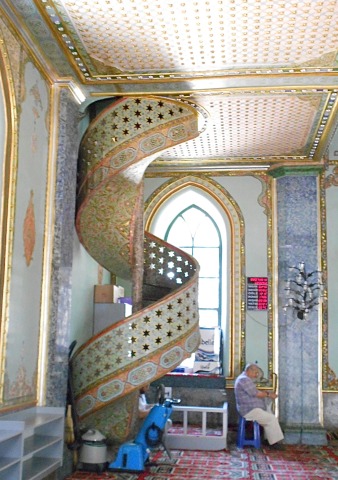
An old man is sitting peacefully at the back. “Your mosque is so lovely,” I can’t help but say and his face lights up.
“It was commissioned by Fuat Paşa,” he tells me. “He was a friend of Sultan Abdülhamid, so he let him borrow his own architect once he’d finished work on the Yıldız Palace. If you look at the mosque there you’ll find exactly the same colours as here.”
So that explains it.
“He was the governor here,” the old man continued. “He paid for the Hükümet Konaği (now the Adalet Sarayı) as well, and for an underground water system.”
By this time we’ve been joined by the local imam who enthusiastically reiterates these details. Fuat Paşa, I think, sounds as if he must have been the Yılmaz Büyükerşen of his day, Büyükerşen being the man widely credited with the transformation of Eskişehir from a nothingy small Anatolian town into the vibrant modern metropolis it is now.
Today, though, Fuat Paşa seems to be remembered only in the form of a small bust that sits ignored on the terrace in front of the Adalet Sarayı (Palace of Justice). He served as the governor from 1893 to 1908, it says, and that’s the sum of it. No listing of his achievements. No mention of his building work. Not much for a man who did so much to improve his town.
